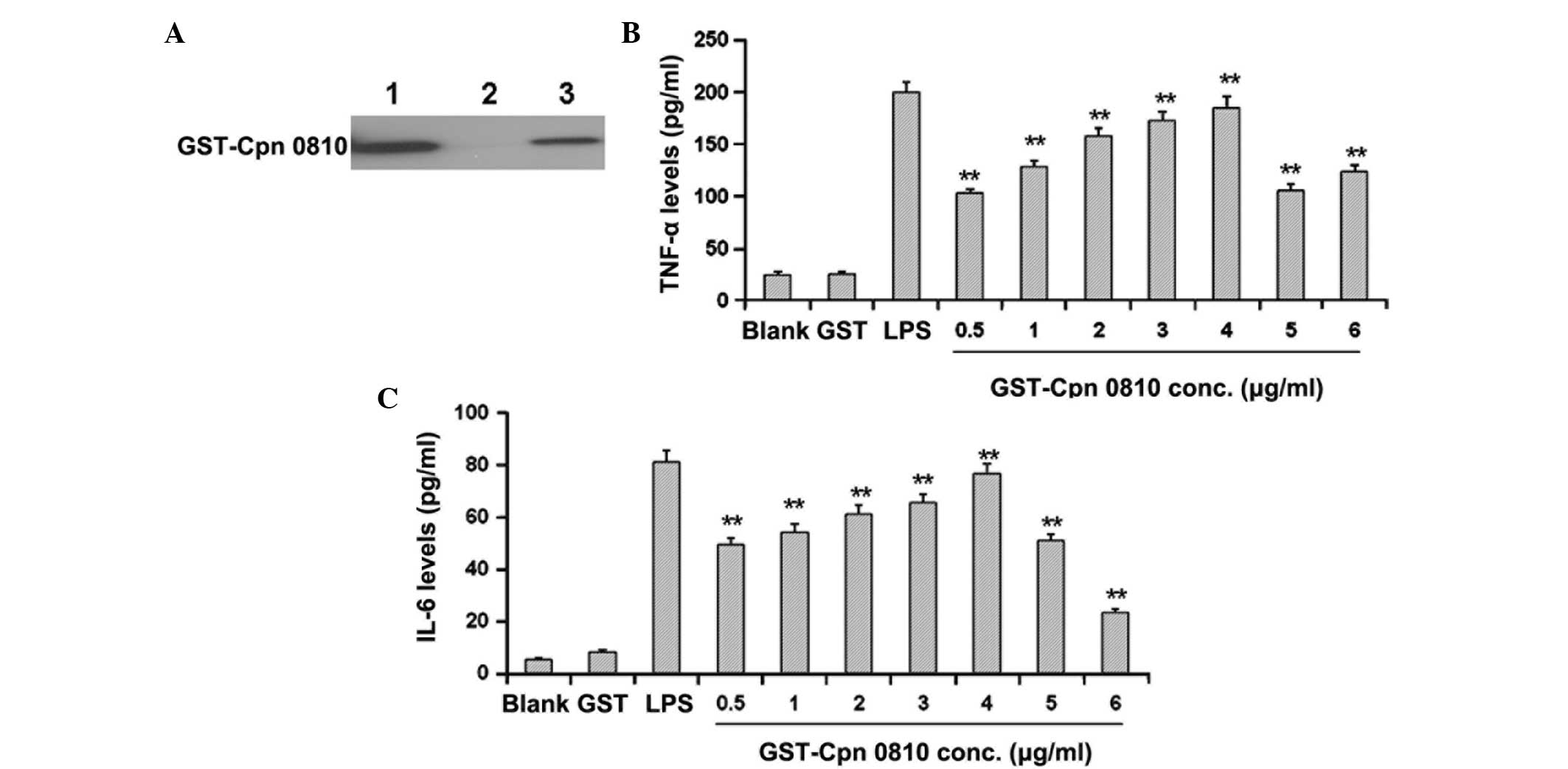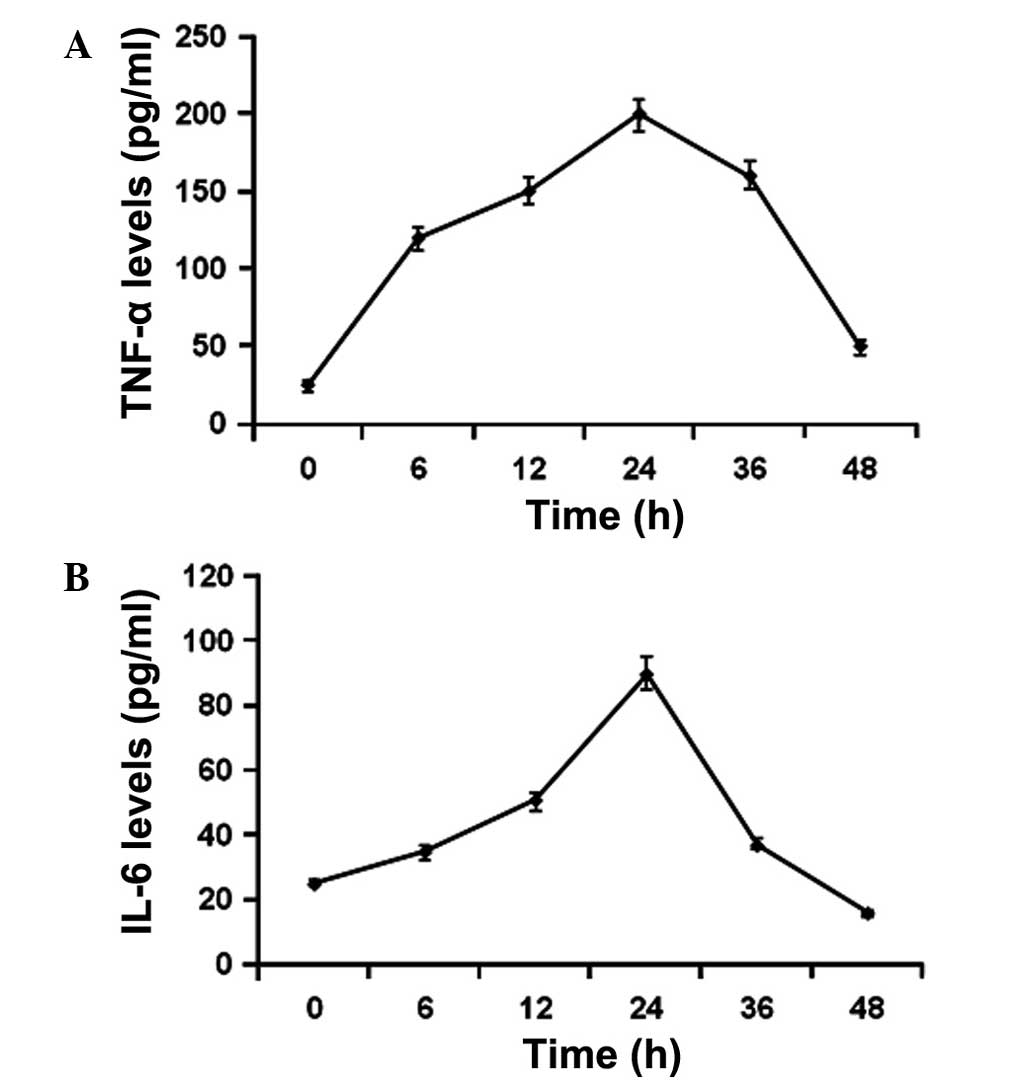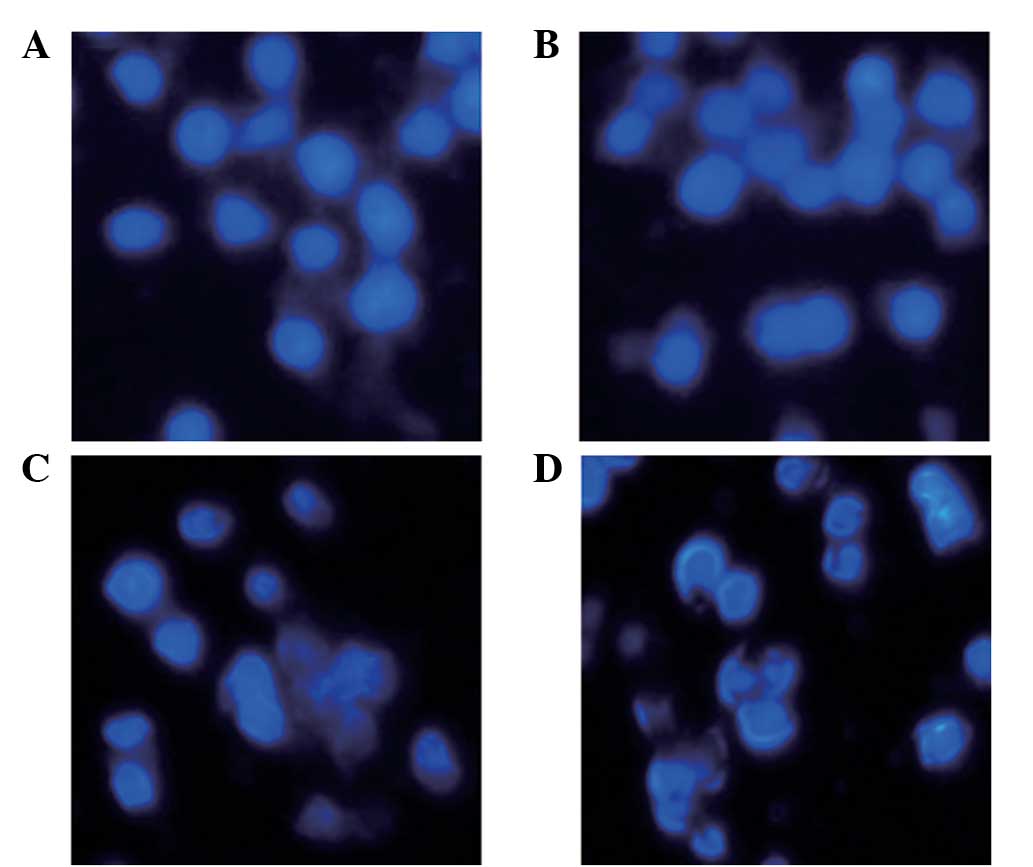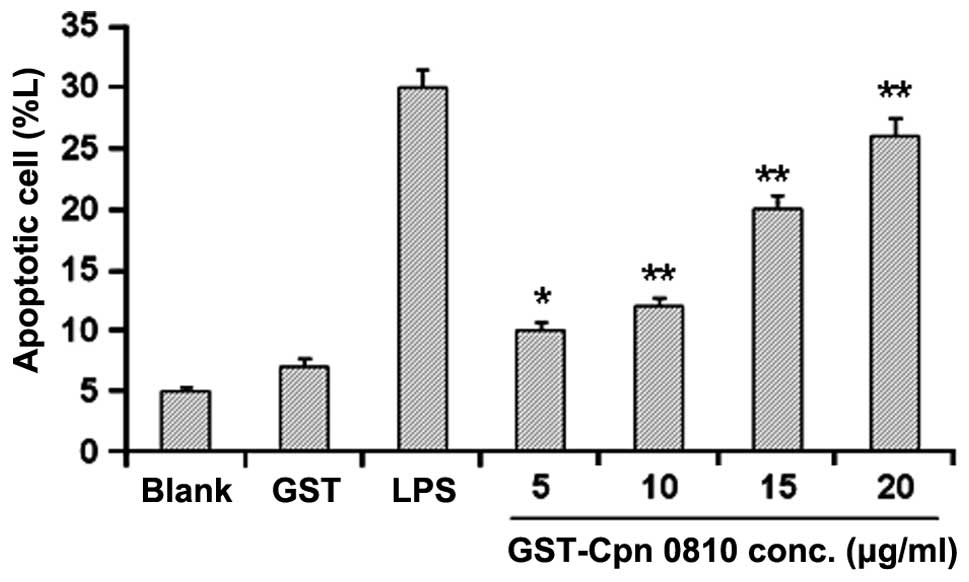|
1
|
Lui G, Ip M, Lee N, et al: Role of
‘atypical pathogens’ among adult hospitalized patients with
community-acquired pneumonia. Respirology. 14:1098–1105. 2009.
View Article : Google Scholar : PubMed/NCBI
|
|
2
|
Damy SB, Higuchi ML, Timenetsky J, et al:
Mycoplasma pneumoniae and/or Chlamydophila pneumoniae inoculation
causing different aggravations in cholesterol-induced
atherosclerosis in apoE KO male mice. BMC Microbiol. 9:1942009.
View Article : Google Scholar : PubMed/NCBI
|
|
3
|
Papaetis GS, Anastasakou E and Orphanidou
D: Chlamydophila pneumoniae infection and COPD: more evidence for
lack of evidence? Eur J Intern Med. 20:579–585. 2009. View Article : Google Scholar : PubMed/NCBI
|
|
4
|
Jupelli M, Shimada K, Chiba N, et al:
Chlamydia pneumoniae infection in mice induces chronic lung
inflammation, iBALT formation, and fibrosis. PLoS One.
8:e774472013. View Article : Google Scholar : PubMed/NCBI
|
|
5
|
Mota LJ and Cornelis GR: The bacterial
injection kit: type III secretion systems. Ann Med. 37:234–249.
2005. View Article : Google Scholar : PubMed/NCBI
|
|
6
|
Mota LJ, Sorg I and Cornelis GR: Type III
secretion: the bacteria-eukaryotic cell express. FEMS Microbiol
Lett. 252:1–10. 2005. View Article : Google Scholar : PubMed/NCBI
|
|
7
|
Journet L, Hughes KT and Cornelis GR: Type
III secretion: a secretory pathway serving both motility and
virulence (review). Mol Membr Biol. 22:41–50. 2005. View Article : Google Scholar : PubMed/NCBI
|
|
8
|
Müller N, Sattelmacher F, Lugert R and
Gross U: Characterization and intracellular localization of
putative Chlamydia pneumoniae effector proteins. Med Microbiol
Immunol. 197:387–396. 2008. View Article : Google Scholar : PubMed/NCBI
|
|
9
|
Stone CB, Johnson DL, Bulir DC, Gilchrist
JD and Mahony JB: Characterization of the putative type III
secretion ATPase CdsN (Cpn0707) of Chlamydophila pneumoniae. J
Bacteriol. 190:6580–6588. 2008. View Article : Google Scholar : PubMed/NCBI
|
|
10
|
Herrmann M, Schuhmacher A, Mühldorfer I,
Melchers K, Prothmann C and Dammeier S: Identification and
characterization of secreted effector proteins of Chlamydophila
pneumoniae TW183. Res Microbiol. 157:513–524. 2006. View Article : Google Scholar : PubMed/NCBI
|
|
11
|
Cortes C, Rzomp KA, Tvinnereim A, Scidmore
MA and Wizel B: Chlamydia pneumoniae inclusion membrane protein
Cpn0585 interacts with multiple Rab GTPases. Infect Immun.
75:5586–5596. 2007. View Article : Google Scholar : PubMed/NCBI
|
|
12
|
Luo J, Jia T, Zhong Y, Chen D, Flores R
and Zhong G: Localization of the hypothetical protein Cpn0585 in
the inclusion membrane of Chlamydia pneumoniae-infected cells.
Microb Pathog. 42:111–116. 2007. View Article : Google Scholar : PubMed/NCBI
|
|
13
|
Kariagina AS, Alekseevskiĭ AV, Spirin SA,
Zigangirova NA and Gintsburg AL: Effector proteins of Clamidia. Mol
Biol (Mosk). 43:963–983. 2009.(In Russian).
|
|
14
|
Luo J, Jia T, Flores R, Chen D and Zhong
G: Hypothetical protein Cpn0308 is localized in the Chlamydia
pneumoniae inclusion membrane. Infect Immun. 75:497–503. 2007.
View Article : Google Scholar :
|
|
15
|
Flores R, Luo J, Chen D, Sturgeon G,
Shivshankar P, Zhong Y and Zhong G: Characterization of the
hypothetical protein Cpn1027, a newly identified inclusion membrane
protein unique to Chlamydia pneumoniae. Microbiology. 153:777–786.
2007. View Article : Google Scholar : PubMed/NCBI
|
|
16
|
Fields KA and Hackstadt T: Evidence for
the secretion of Chlamydia trachomatis CopN by a type III secretion
mechanism. Mol Microbiol. 38:1048–1060. 2000. View Article : Google Scholar : PubMed/NCBI
|
|
17
|
Lugert R, Kuhns M, Polch T and Gross U:
Expression and localization of type III secretion-related proteins
of Chlamydia pneumoniae. Med Microbiol Immunol. 193:163–171. 2004.
View Article : Google Scholar
|
|
18
|
Beeckman DS, Geens T, Timmermans JP, Van
Oostveldt P and Vanrompay DC: Identification and characterization
of a type III secretion system in Chlamydophila psittaci. Vet Res.
39:272008. View Article : Google Scholar : PubMed/NCBI
|
|
19
|
Jamison WP and Hackstadt T: Induction of
type III secretion by cell-free Chlamydia trachomatis elementary
bodies. Microb Pathog. 45:435–440. 2008. View Article : Google Scholar : PubMed/NCBI
|
|
20
|
Häcker H and Karin M: Regulation and
function of IKK and IKK-related kinases. Sci STKE. 2006:re132006.
View Article : Google Scholar : PubMed/NCBI
|
|
21
|
Pfeffer K: Biological functions of tumor
necrosis factor cytokines and their receptors. Cytokine Growth
Factor Rev. 14:185–191. 2003. View Article : Google Scholar : PubMed/NCBI
|
|
22
|
Perrins CJ and Bobryshev YV: Current
advances in understanding of immunopathology of atherosclerosis.
Virchows Arch. 458:117–123. 2011. View Article : Google Scholar
|
|
23
|
Hu S, Liang S, Guo H, et al: Comparison of
the inhibition mechanisms of adalimumab and infliximab in treating
tumor necrosis factor α-associated diseases from a molecular view.
J Biol Chem. 288:27059–27067. 2013. View Article : Google Scholar : PubMed/NCBI
|
|
24
|
Paladino N, Mul Fedele ML, Duhart JM,
Marpegan L and Golombek DA: Modulation of mammalian circadian
rhythms by tumor necrosis factor-α. Chronobiol Int. 1–12. 2014.
|
|
25
|
Li L, Li DH, Qu N, Wen WM and Huang WQ:
The role of ERK1/2 signaling pathway in coronary
microembolization-induced rat myocardial inflammation and injury.
Cardiology. 117:207–215. 2010. View Article : Google Scholar : PubMed/NCBI
|
|
26
|
Tisato V, Zauli G, Rimondi E, et al:
Inhibitory effect of natural anti-inflammatory compounds on
cytokines released by chronic venous disease patient-derived
endothelial cells. Mediators Inflamm. 2013:4234072013.
|
|
27
|
Johnston SC, Zhang H, Messina LM, Lawton
MT and Dean D: Chlamydia pneumoniae burden in carotid arteries is
associated with upregulation of plaque interleukin-6 and elevated
C-reactive protein in serum. Arterioscler Thromb Vasc Biol.
25:2648–2653. 2005. View Article : Google Scholar : PubMed/NCBI
|
|
28
|
Ridker PM, Rifai N, Stampfer MJ and
Hennekens CH: Plasma concentration of interleukin-6 and the risk of
future myocardial infarction among apparently healthy men.
Circulation. 101:1767–1772. 2000. View Article : Google Scholar : PubMed/NCBI
|
|
29
|
Sharma J, Dong F, Pirbhai M and Zhong G:
Inhibition of proteolytic activity of a chlamydial
proteasome/protease-like activity factor by antibodies from humans
infected with Chlamydia trachomatis. Infect Immun. 73:4414–4419.
2005. View Article : Google Scholar : PubMed/NCBI
|
|
30
|
Biasucci LM, Santamaria M and Liuzzo G:
Inflammation, atherosclerosis and acute coronary syndromes. Minerva
Cardioangiol. 50:475–486. 2002.(In Italian). PubMed/NCBI
|
|
31
|
Geng YJ and Libby P: Evidence for
apoptosis in advanced human atheroma. Colocalization with
interleukin-1 beta-converting enzyme. Am J Pathol. 147:251–266.
1995.PubMed/NCBI
|
|
32
|
Hayakawa Y, Takemura G, Misao J, et al:
Apoptosis and overexpression of bax protein and bax mRNA in smooth
muscle cells within intimal hyperplasia of human radial arteries:
analysis with arteriovenous fistulas used for hemodialysis.
Arterioscler Thromb Vasc Biol. 19:2066–2077. 1999. View Article : Google Scholar : PubMed/NCBI
|













